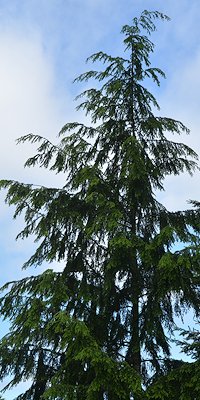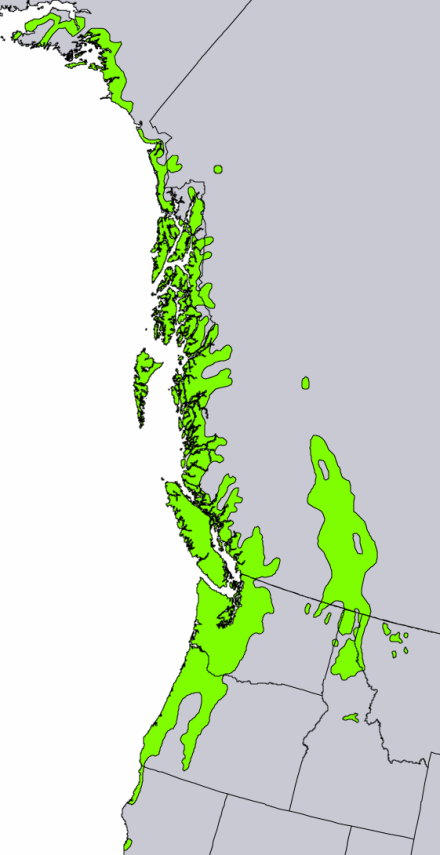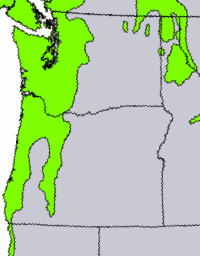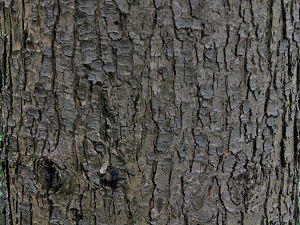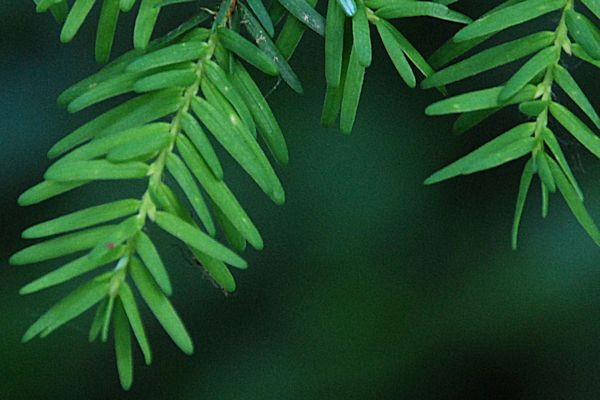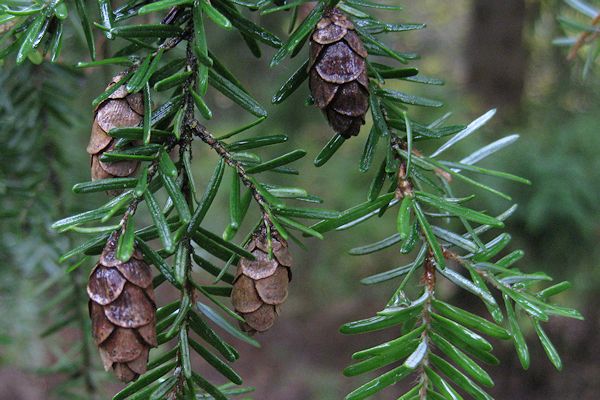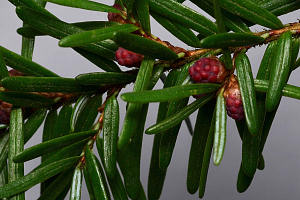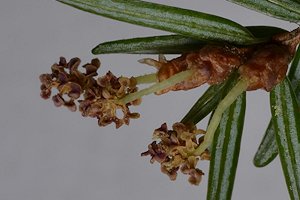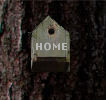 |
Northwest Conifers |
AboutAll ConifersConifersLow-elevationHigh-elevationOthersEast SideSouthwestNon-natives——————Conifer ConesIndexMore Info |
Western Hemlock – Tsuga
heterophylla
|
|
|
Western hemlock is a shade-tolerant tree that can grow to a height of 200 feet (60 meters). The branchlets tend to droop and the leader at the top of the tree curves and droops over rather than standing straight, like firs and spruces. Needles: Western hemlock has distinctive short, flat needles that are usually flattened on the twig, but irregular and variable in length. The needles have white lines on the lower surface. Cones: The cones are usually less than an inch long, and the scales are thin and rounded. Western Hemlock is a prolific producer of cones. You can often find them even on the lower branches. If you look closely in the spring, you may also find some tiny pollen cones hiding in the needles. Bark: The gray bark develops small furrows on large trees. Where it grows: Western hemlock is common in the lower elevations of western Oregon and Washington, especially thriving in wet regions. It also grows in northern Idaho. It is shade tolerant, often thriving in the shade of large Douglas firs. You will often see a young western hemlock growing on a rotting stump or log. You can recognize older trees that started on these "nurse logs" by the airborne roots that straddle an invisible nurse log. The tree continued to grow after the nurse log rotted away. Western hemlock is the state tree of Washington. Western hemlock at Hoyt Arboretum Uses: Western hemlock is an important timber species, used to make lumber and plywood. The pulp is used to make high-quality paper and is the source for making cellophane, rayon, and plastics. Names: Heterophylla, Greek
for "variable leaves," aptly describes the variable length and
orientation of western hemlock needles. If you think of the needles as
being
heterogeneous, you can remember the scientific name. Other common
names: Pacific hemlock and West
Coast hemlock.
|
New pollen cones
Pollen cones after shedding pollen |
© 2011 Ken Denniston

